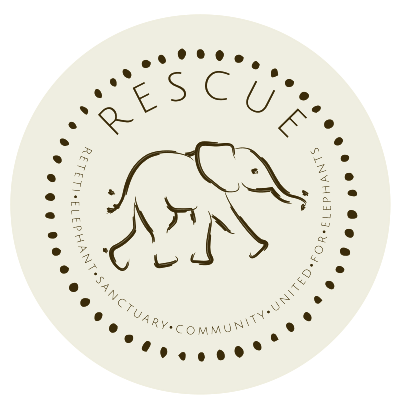Goodbye Naibunga!
Northern Kenya is known for its vast dry interior with seasonal rains set apart by Great Plains stretching through the Matthew ranges over thatched land and beyond. It’s a land of contrast, plants and animals must adapt to harsh conditions to survive.
Elephants have developed for ages a social system of control to fend for themselves. Matriarchs are instrumental in solving everyday problems of keeping their groups fed, watered, safe and reproducing. One of the most significant expression about these animals is they express grief. A mother goes through a period of despondency after the death of a calf dragging the herd for days. Their sheer interest in the dead elephant is evidence that elephants have a concept of death or at least can go through a period of realisation that a loved one cannot be helped anymore and left with profound decisions to make.
28th August, an abandoned elephant calf is reported at Mpejot area of Naibunga conservancy. Naibunga rangers headed to the area awaiting for the rescue team to arrive. The elephant was in anguish, suffering and in pain. It was about 5-6 months old. She was left behind and the herd moved on.
Dr Matthew Mutinda tranquillised the calf and was carried to a waiting aircraft where it was flown to the sanctuary.
“He reversed the tranquillizer in front of a crowd of community members, the like of which I have not seen before. The calf responded well and with help got to its feet. It stood and looked at us. Its eyes said help. But it looked strong. I’ve been around elephants a great deal and this one literally didn’t smell right. It smelled of death. I could taste death. It didn’t stop looking, but it wasn’t a stare, this wasn’t aggression, this was pleading.” Says David Chancellor who was with the team.
On getting to the sanctuary, an autopsy was done.
-The autopsy showed a huge number of intestinal worms. This was the cause of the calf losing body condition so catastrophically, an indicator of which was the pot belly. It was hypoglycaemic; again, caused by the intestinal worms, this is a condition in which the body’s blood sugar (glucose) is lower than normal.
Glucose is the body’s main energy source and this would have resulted in the calf being unable to keep up with the herd, despite all of their efforts. Eventually there would be a realisation that staying with the calf would endanger the entire group, and they would have made the crushing decision to leave it behind.
Despite all the team’s efforts, it just seems that this time they couldn’t save this one. Wild African elephants are commonly infected with intestinal strongyle parasites, but relatively few studies have been carried out on the parasites of free-ranging wild animal species. As is clear here, gastrointestinal parasites can have an important influence on fitness and survival, particularly in populations of endangered species.
Seasonal gastrointestinal parasite load assessments guide ecologists on other wildlife since elephants are keystone species. The McMaster method is currently used by researchers to investigate seasonal variations of trematodes, cestodes and nematode eggs in the faeces of wild African elephants. Preliminary comparisons between seasonal variations in gastrointestinal parasite load helps in assessing seasonal environmental stress on wild elephants. This study also provides an initial catalogue of parasite types and variations found across seasons in African elephants and reports on gastrointestinal parasite prevalence and load, valuable baseline data for future research. ~ David Chancellor
It’s with great disappointment we could not save the life of this calf.
Rest well baby.

